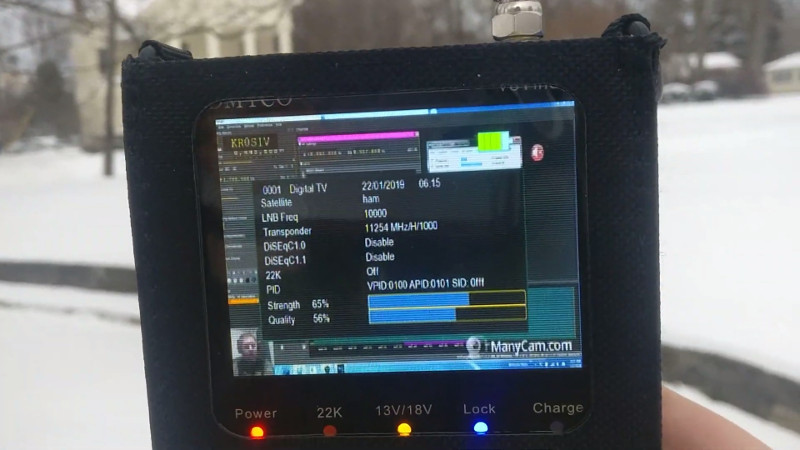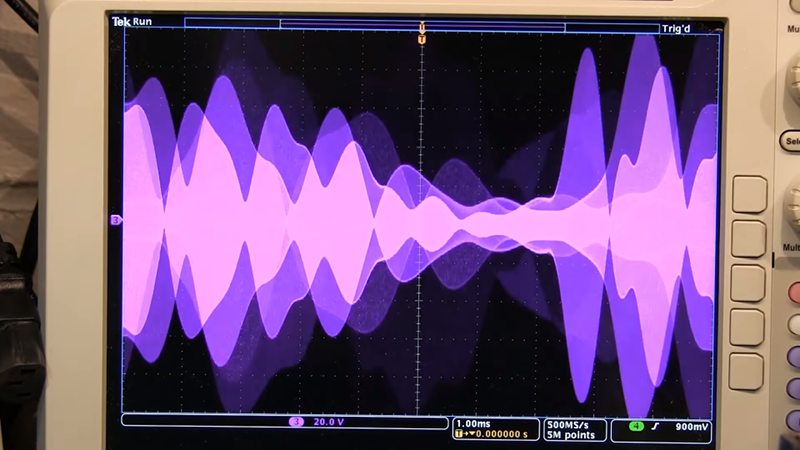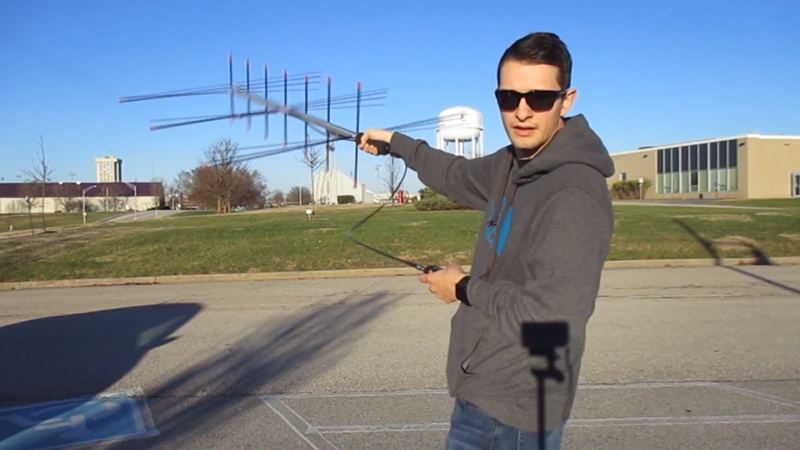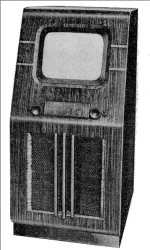In verband met carnaval zal er op 4 maart geen bijeenkomst zijn.
PI2NOS stopt in zijn huidige vorm

De bovenregionale repeater PI2NOS wordt ontmanteld. Dat meldt de Stichting Scoop Hobbyfonds op haar website. Vorige week stopte de ontvanger in Breda. De komende weken volgen een aantal locaties in het noorden van het land.
Drie redenen
De stichting noemt drie redenen waarom PI2NOS in zijn huidige vorm moet stoppen.
De eerste en belangrijkste reden is dat de inkomsten van sponsoren en donateurs teruglopen. Ten tweede heeft de bovenregionale repeater al lange tijd te kampen met frequentiemisbruik. Sommige mensen verstoren het verkeer op de PI2NOS zodanig dat goedwillenden afscheid nemen van de repeater. Ondanks extra inspanningen van het Agentschap Telecom zijn de verstoringen niet gestopt. Tot slot noemt de stichting als reden dat de kosten van de verschillende opstellocaties voor hun systemen oplopen.
Het is jammer dat dit unieke project van gekoppelde radiosystemen in zijn huidige vorm niet kan blijven bestaan.
EF50: the Tube that Changed Everything

From today’s perspective, vacuum tubes are pretty low tech. But for a while they were the pinnacle of high tech, and heavy research followed the promise shown by early vacuum tubes in transmission and computing. Indeed, as time progressed, tubes became very sophisticated and difficult to manufacture. After all, they were as ubiquitous as ICs are today, so it is hardly surprising that they got a lot of R&D.
Prior to 1938, for example, tubes were built as if they were light bulbs. As the demands on them grew more sophisticated, the traditional light bulb design wasn’t sufficient. For one, the wire leads’ parasitic inductance and capacitance would limit the use of the tube in high-frequency applications. Even the time it took electrons to get from one part of the tube to another was a bottleneck.
There were several attempts to speed tubes up, including RCA’s acorn tubes, lighthouse tubes, and Telefunken’s Stahlröhre designs. These generally tried to keep leads short and tubes small. The Philips company started attacking the problem in 1934 because they were anticipating demand for television receivers that would operate at higher frequencies.
Dr. Hans Jonker was the primary developer of the proposed solution and published his design in an internal technical note describing an all-glass tube that was easier to manufacture than other solutions. Now all they needed was an actual application. While they initially thought the killer app would be television, the E50 would end up helping the Allies win the war.
Television
In Britain, there was a single television transmitter at Alexandra Palace — the start of what would become the BBC. This was not only the first public television service but also the first fully electronic television system. Pye Ltd. — a company eventually bought by Philips — made receivers that were surprisingly successful. The sound was at 41.5 Mhz and the visual was at 45 MHz — high frequencies for those days.
Spurred by the demand, Pye decided that a set with more range would create a broader market for receivers. The problem was finding a tube that could handle the 45 MHz frequency in their tuned radio frequency (TRF) design.
Pye wrote out the specifications for what they needed, but couldn’t get them made reliably and cheaply. They turned to Philips who took Jonker’s ideas and added some items needed for this application, producing the EF50 — a pentode. The resulting TV set (see page 199) had a range of about five times the older sets.
Construction
Old tubes used a difficult process called pinching to seal the end of a glass tube with the leads running through it. The pinch formed an inverted V shape where the bakelite base of the tube fit the wide part of the V and the wires within entered the tube through the point of the V.
This had several problems. As more wires had to pass through the pinch, they had to get closer together. That increased stray capacitance. Worse, the distance from the bottom of the V to the top of the V meant wires had to be relatively long which added inductance. Finally, the size of the V — often half the total length of the tube — was preventing tubes from getting smaller, hindering the development of portable equipment.
One way to solve this was to build the tubes from metal instead of glass, with some connections going through the top of the tube. However, these tubes were expensive to manufacture in quantity and designers did not like having to wire to the top of the tube. The Stahlröhre bucked the trend, putting the tube components in horizontally to decrease wiring to the base and using no top connections. However, again, the cost to manufacture was high. The 1934 acorn tube was all glass and used two parts sealed together with short leads but were also known to be expensive to produce.
Philips, Pye, and the War
When the Dutch military first asked Philips for tubes around 1918, they declined; Gerard Philips though radio had little practical value. It would be 1923 before Philips decided to use its expertise in light bulbs to produce radio tubes. By 1938, Jonker’s work was circulating and in 1939 there was even an article about it in Wireless Engineer.
By the time Pye came looking for high-frequency tubes, Philips was ready due to the earlier work. The Pye receiver used six tubes and required some tweaking, including the addition of a metal shield.
Meanwhile, there was war. The Battle of Britain was in 1940 and the military was busy in 1939 working on RADAR that also operated at high frequencies. This RADAR — and the command and control strategies used with it — would be key to winning the upcoming battle. The team working on airborne RADAR apparently only had one receiver good enough to get results. Then they received a tip that Pye had an excellent receiver that worked in the same frequency range. This became the basis for Britain’s RADAR sets through the war. About 60% of all Pye TV IF strips wound up in British RADAR sets.
The big problem was that by 1940 the Netherlands was in German hands. The production line needed to be moved to Britain, and when the HMS Windsor took the escaping Dutch government to England, the Philips family was also onboard with the diamond dies needed to produce the fine tungsten wires used in the EF50 tube.
After the war, the EF50 would find a home in many oscilloscopes and radio receivers. This was both because of its superior frequency ability and the availability of war surplus. Others would also produce the tube including Marconi-Osram (as the Z90) and Cossor (63SPT). Mullard produced the tube using the original Phillips equipment and both Rogers and Sylvania also produced a version.
Nuvistors
This type of tube would be the king of the hill for RF work until 1959. That’s the year RCA introduced the nuvistor — a metal and ceramic tube assembled in a vacuum chamber. These were nearly as tiny as a transistor, low noise, and had excellent performance at radio frequencies. These were found in a lot of gear all the way until the early 1970s including TV tuners, oscilloscopes, and tape recorders.
More Details
There’s a very long and very well-researched history of everyone and everything related to the EF50 if you want to really dig into the details. There’s even a translation of part of the original internal report about it. You can also find similar information and a lot of unique pictures at [Keith Thrower’s] site.
If you like the sound of an old tube radio, the medium wave receiver in the video below uses some EF50s and it sounds great. Want more tube history? Or perhaps you’d rather make your own. Or you can watch how they made similar tubes back in the day.
This Satellite Finder Can Watch Amateur TV

Setting up satellite dishes can be a finicky business. To aid in the alignment of these precision antennas, satellite finders are often used which can display audio and video feeds from the satellite while also providing signal strength readouts for accurate adjustment. However, these devices can also be used in interesting ways for more terrestrial purposes (Youtube link).
Using the DMYCO V8 Finder, [Corrosive] demonstrates how to set up the device to pick up terrestrial amateur streams. Satellite reception typically involves the use of a low-noise block downconverter, which downconverts the high frequency satellite signal into a lower intermediate frequency. Operating at the 1.2GHz amateur band, this isn’t necessary, so the device is configured to use an LNB frequency of 10000, and the channel frequency entered as a multiple of ten higher. In this case, [Corrosive] is tuning in an amateur channel on 1254 MHz, which is entered as 11254 MHz to account for the absent LNB.
[Corrosive] points out that, when using an F-connector to BNC adapter with this setup, it’s important to choose one that does not short the center pin to the shield, as this will damage the unit. This is due to it being designed to power LNBs through the F-connector for satellite operation.
By simply reconfiguring a satellite finder with a basic scanner antenna, it’s possible to create a useful amateur television receiver. If you’re wondering how to transmit, [Corrosive] has that covered, too. Video after the break.
Understanding Modulated RF With [W2AEW]

There was a time — not long ago — when radio and even wired communications depended solely upon Morse code with OOK (on off keying). Modulating RF signals led to practical commercial radio stations and even modern cell phones. Although there are many ways to modulate an RF carrier with voice AM or amplitude modulation is the oldest method. A recent video from [W2AEW] shows how this works and also how AM can be made more efficient by stripping the carrier and one sideband using SSB or single sideband modulation. You can see the video, below.
As is typical of a [W2AEW] video, there’s more than just theory. An Icom transmitter provides signals in the 40 meter band to demonstrate the real world case. There’s discussion about how to measure peak envelope power (PEP) and comparison to average power and other measurements, as well.
Although the examples use a ham radio band, the concepts will apply to any radio frequency from DC to light. If you want to do similar measurements, you’d need a scope, a peak-reading watt meter, and a dummy load along with the transmitter.
We enjoyed that he uses a scope probe as a pointer, but we can’t really explain why. If you are ambitious, you can build your own SSB transceiver. Another common way to modulate RF is FM and we’ve talked about it before, too.
Radio Telescopes Horn In With GNU Radio

Who doesn’t like to look up at the night sky? But if you are into radio, there’s a whole different way to look using radio telescopes. [John Makous] spoke at the GNU Radio Conference about how he’s worked to make a radio telescope that is practical for even younger students to build and operate.
The only real high tech part of this build is the low noise amplifier (LNA) and the project is in reach of a typical teacher who might not be an expert on electronics. It uses things like paint thinner cans and lumber. [John] also built some blocks in GNU Radio that made it easy for other teachers to process the data from a telescope. As he put it, “This is the kind of nerdy stuff I like to do.” We can relate.
The telescope is made to pick up the 21 cm band to detect neutral hydrogen from the Milky Way. It can map the hydrogen in the galaxy and also measure the rotational speed of the galaxy using Doppler shift. Not bad for an upcycled paint thinner can. These are cheap enough, you can even build a fleet of them.
This would be a great project for anyone interested in radio telescopes or space. However, it is particularly set up for classroom use. Students can flex their skills in math, engineering, programming, and — of course — astronomy and physics.
We’ve seen old satellite LNAs repurposed to radio telescopes. If you think you don’t have room for a radio telescope, think again.
Algemene Ledenvergadering 2019
Op maandag 25 februari 2019 zal de Algemene Ledenvergadering van de VRZA Afdeling Zuid-Limburg plaatsvinden.
Alle afdelingsleden, die op 1 februari lid zijn van de VRZA, zijn van harte welkom in het Gidsengebouw gelegen aan de Floribertusstraat 19 te Brunssum.
De vergadering begint om 20:05 uur, inloop vanaf 19:45 uur.
Leden ontvangen nog een uitnodiging per post of per e-mail maar daarin de agenda.
Superheterodyne Radios Explained

The general public thinks there is one thing called a radio. Sure, they know there are radios that pick up different channels, but other than that, one radio is pretty much like the other. But if you are involved in electronics, you probably know there are lots of ways a radio can work internally. A crystal set is very different from an FM stereo, and that’s different still from a communications receiver. We’d say there are several common architectures for receivers and one of the most common is the superheterodyne. But what does that mean exactly? [Technology Connection] has a casual explanation video that discusses how a superhet works and why it is important. You can see the video, below.
Engineering has always been about building on abstractions. This is especially true now when you can get an IC or module that does most of what you want it to do. But even without those, you would hardly start an electronics project by mining copper wire, refining it, and drawing your own wire. You probably don’t make many of your own resistors and capacitors, neither do you start your design at the fundamental electronic equations. But there’s one abstraction we often forget about: architecture. If you are designing a receiver, you probably don’t try to solve the problem of radio reception; instead you pick an architecture that is proven and design to that.
There are other examples. Do you really work out a binary counter every time? Or how to make an op-amp amplify? You start with those building blocks. Of course, true innovation means you have to stop doing that and actually think of new and different (and possibly better) ways to do the same task. But most of the time you aren’t trying to innovate, you are trying to get the job done.
The video is pretty straightforward and doesn’t assume you have much radio background. However, it does manage to do some real demonstrations and it is worth a watch. There are many other receiver architectures, of course. Regenerative, superregenerative, homodyne (direct conversion), Hilbert, and Weaver are all types of receivers and there are doubtless more. The funny part is that many of the ideas we still use today came from one man: Edwin Armstrong.
All About Ham Satellites

How hard is it to build a ground station to communicate with people via a satellite? Probably not as hard as you think. [Modern Ham] has a new video that shows just how easy it can be. It turns out that a cheap Chinese radio is all you need on the radio side. You do, however, benefit from having a bit of an antenna.
It isn’t unusual for people interested in technology to also be interested in space. So it isn’t surprising that many ham radio operators have tied space into the hobby. Some do radio astronomy, others bounce signals off the moon or meteors. Still others have launched satellites, though perhaps that’s not totally accurate since as far as we know all ham radio satellites have hitched rides on commercial rockets rather than being launched by hams themselves. Still, designing and operating a ham radio station in space is no small feat, but it has been done many times with each generation of satellite becoming more and more sophisticated.
While it is true you’ll get better results with a directional antenna, it is possible to make some contacts with a fairly modest one. Back in the 1970s and 1980s, tracking when the satellite was overhead was a major task, but the modern ham just needs a cell phone app.
If you have images of hams sitting at their radios having long-winded discussions, you haven’t seen a typical satellite pass. You don’t have much time, so the contacts are fast and to the point. In fact, this video dispels a lot of ham stereotypes. A young guy shows how you can do something exciting with ham radio for very little investment and it doesn’t matter if you have deed restrictions because all the gear would fit in your garage when you aren’t using it.
The downside is that [Modern Ham’s] demo didn’t show him making any solid contacts although he was clearly hearing the satellite and people were hearing him. He admits it wasn’t his best pass. The second video below shows a much more typical pass with the same kind of setup. If you want to see what results you can get with a more modest antenna, check out this video.
In addition to satellites built by hams, some have started life doing a different task and been taken over by hams later. If you don’t have a ham license (and, by the way, they are easier to get than ever), you can still listen in to some very interesting space communications.
Trompetenklänge zu Heilig Abend
Auch heuer wird uns IN3ECH, Karl aus Welsberg, erneut ein Weihnachtslied mit seiner Trompete vorspielen. Die Liveübertragung findet am 24. Dezember 2018 um 19.00 Uhr statt und wird über unsere Umsetzer im Land ausgestrahlt.
Jene, die das “Link Südtirol” nicht hören, können sich über Echolink am IR3UGM mit der Nummer 55883 einwählen.
Wir danken Karl und hoffen auf zahlreiche Zuhörer.
FROHE WEIHNACHTEN.





